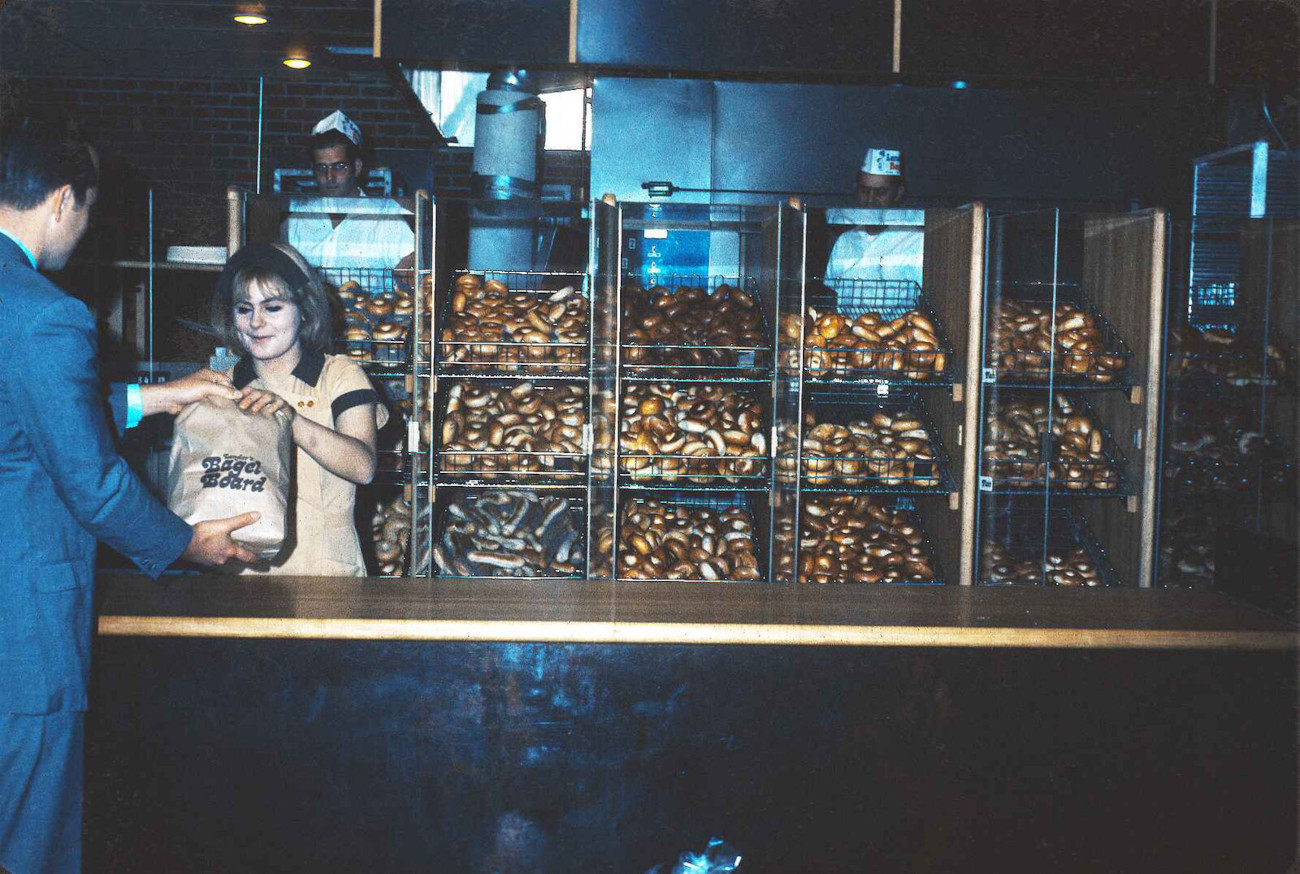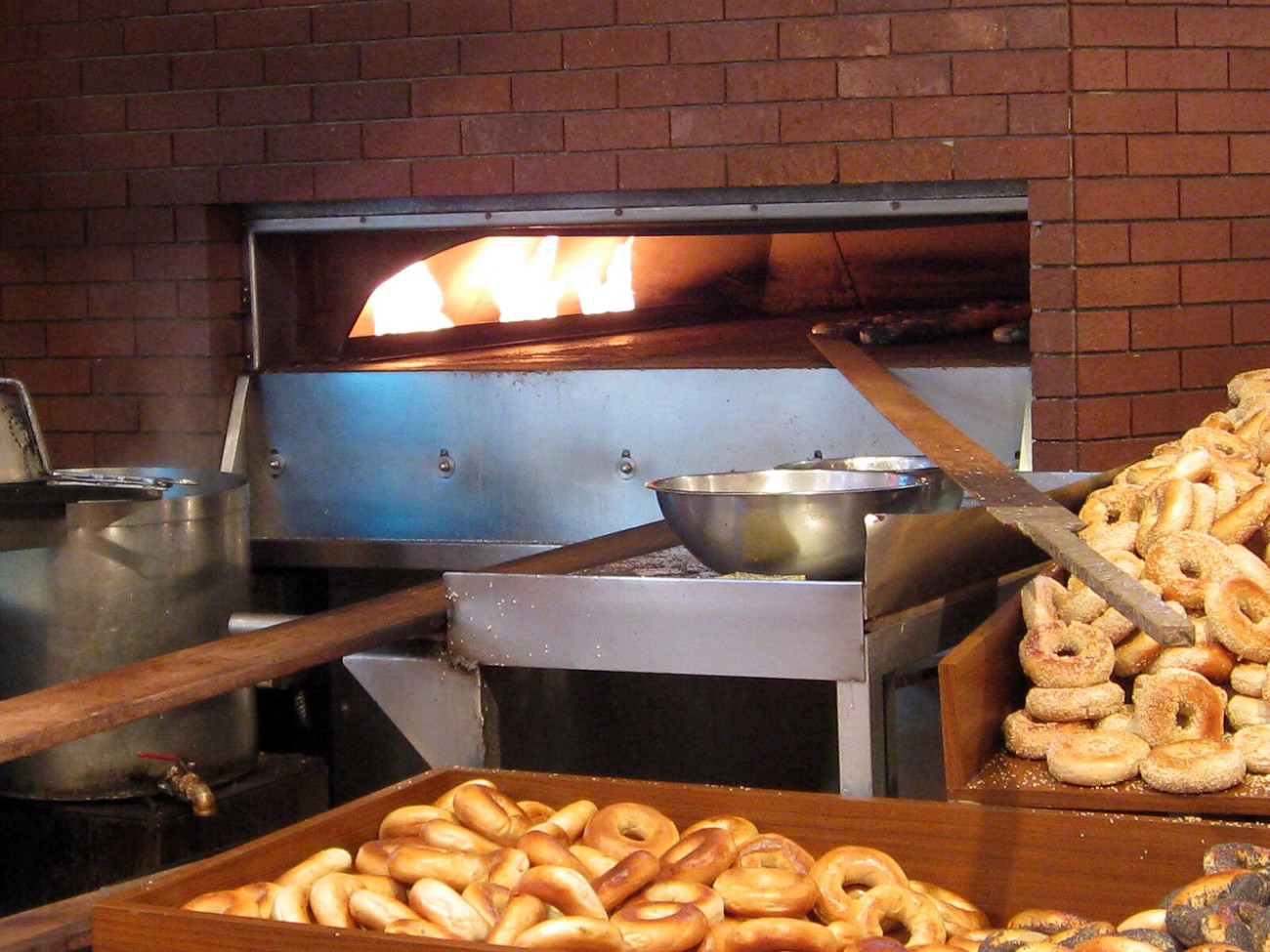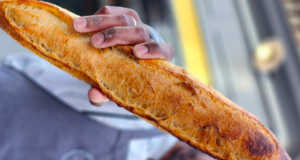From Fat Free Trend To Indulgent Mainstay — The Bagel Boom And Bust Of The 1990s
Toasted to crispy perfection on the outside, with a slight chew on the inside, and blanketed with a substantial coating of cream cheese makes bagels the hefty handheld breakfast that’s pretty much a mainstay breakfast staple. But bagels weren’t always a go-to option, in fact, they were, up until recently, more of a trend than anything else. So just how did bagels gain footing in our breakfast landscape?

Up until the 1980s, the bagel was resigned and thrived in pockets of the Northeast, specifically in New York’s Tristate region, where there was still one of the largest Jewish populations. It was a regional ethnic food and was simply that, a specialty food item.

It was in the late 80s that a perfect storm of factors collided, making the bagel the new “it” food. By this time, the low-fat, fat-free dialogue promoted by health officials since the 1960s was at its peak, and health gurus were touting and raging a war against the all-fattening breakfast villain— the doughnut. Similar in appearance, many proclaimed the bagel as the new fat-free alternative to the doughnut. This diet philosophy, coupled with the massive advertising campaign war between major bread manufacturers Sandra Lee and Lenders, brought the bagel to the national stage.

Now less of an ethnic food, and more of a nationally recognized food, drove investors to take this novelty food, and franchise the bagel across the country.

This push into new markets was successful — to a degree. Many of these companies overshot expansion, leading to overextension. The writing on the wall came around the mid-1990s when the peak of fat-free snacks saw a fiscal downturn. Decades of consuming fat-free foods without seeing the fat come off created a sort of consumer fatigue, as many people returned to buying more indulgent things like doughnuts and ice cream.

The fact was that bagels weren’t necessarily healthier than doughnuts. With the size of the bagel annually increasing from its original three-ounce size to practically doubling to six ounces by the late 1990s, people didn’t eat bagels plain. Toppings, generally a choice between butter or cream cheese, did nothing to lower the fat content and in some cases had more grams of fat and sugar than your average doughnut.
A retraction in consumer demand — coupled with franchisees unable to pay back unexpected debt from overexpansion — led the bubble to burst. With the reduction and limited the sales of bagels, one has to wonder why is are bagels still alive and thriving?

Throughout the 2000s and 2010s, the bagel’s image transformed from a fast food chain staple to one of artisanal uniqueness. Mass market bagels are baked quickly, skipping the original boiling process completely, they are generally baked in an oven that’s injected with steam. During the first two decades of Y2K, boiling then baking became the popular way to make a bagel. The bagel world became divided between honey-sweet boiled and roasted Montreal-styled bagels and Manhattan’s malt and salt-boiled method.
Nowadays, there’s a spectrum of bagels out on the market. While bagels were more accessible in the late 80s and early 90s due to the sheer amount of franchised places selling bagels, the variety of bready manufactured bagels to the extremely chewy artisanally boiled bagels is still thriving. Once the bagel lost its diet-food label and became an indulgent American treat, it found its forever home in the culinary world.













